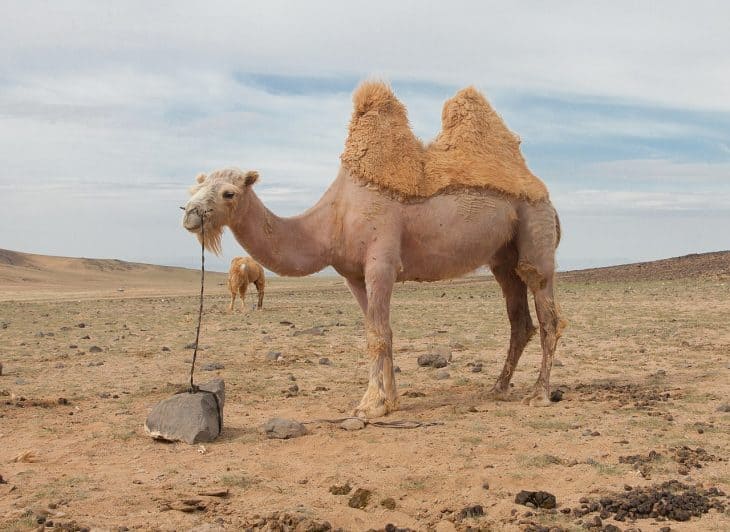
Whenever you hear the word ‘camel,’ the image of their peculiar humps and sandy desert dunes are among the first things that come to mind. Little do you know that there are more camel facts about these beautiful creatures than any of that. Have you heard about their participation in past wars? Learn about that, and many more when you read these interesting camel facts.
- The name ‘camel’ has an Arabic translation meaning ‘beauty.’
- The natural habitats of camels are mainly in Asia and Africa.
- In association with its native desert climate, camels earned the title ‘ship of the desert.’
- Prominent physical characteristics of camels are the humped back, long legs, and big-lipped snout.
- Today, there are three extant types of camels namely Dromedary, Bactrian, and wild Bactrian.
- Dromedary or Arabian camels have only one hump.
- The two hump camel is known as the Bactrian camel.
- Camel’s eyelashes consist of two long rows for protection over their eyes.
- Camels also have a clear third eyelid as another protective layer from blowing sand.
- Sand is not a problem for the camel nose as they can shut their nostrils during sand storms.
- Their nose can also preserve water vapor which they can return to the body when needed.
- The fur on camel ears keeps dust and sand away from their stirrups.
- Camels can carry 375-600 lbs or 170-270 kgs on their backs.
- They have oval-shaped red blood cells that keep their blood flow continuously even when there is water scarcity.
- Camels became domesticated due to them being sources of meat, milk, leather, and wool.
- Camels are social creatures and like greeting each other by blowing on each other’s faces.
- Certain camel noises were used in the vocalization of the character Chewbacca from Star Wars.
- The uncommon stride that camels make is a result of them using both legs on the same side of their bodies simultaneously.
- Camels can run as fast as 40 mph, but can only maintain up to 25 mph for long periods.
- During self-defense, camels can use all four of their legs in kicking an opponent.
Camels originated from North America as far back as 50 million years ago.
Camelops are homegrown camels in North America. However, they reached extinction around 10,000 years ago. Their existence in the Old World is a rather recent event in terms of geology.
In 1758, Carl Linnaeus named both the Dromedary and domestic Bactrian camel.
Their scientific names are Camelus dromedarius and Camelus bactrianus respectively. Back then, the Swedish zoologist was only aware of the domestic variety of the species.
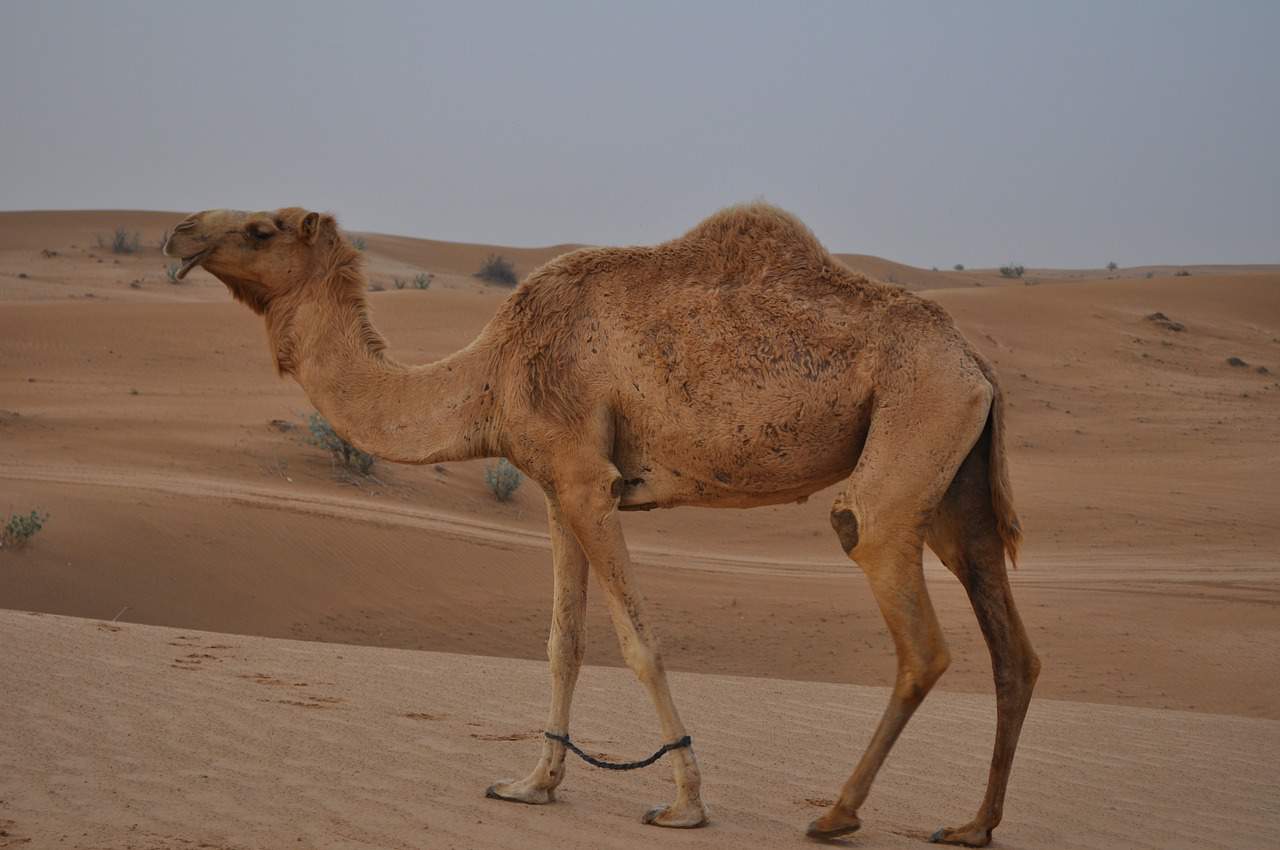
In 1878, Nikolai Prejevalsky discovered the Wild Bactrian camels.
This Russian geographer found the lot during his exploration in Mongolia and Tibet. The scientific name for Wild Bactrian camels is Camelus ferus.
The Wild Bactrian is not a subspecies of the Domestic Bactrian.
DNA analyses showed that the Wild Bactrian has three extra chromosome pairs than the number found in Domestic Bactrian. Hence, the Wild Bactrian is a separate species.
The International Union for Conservation of Nature declared the Wild Bactrian as a critically endangered species.
Sadly, its population has decreased into a highly irreversible situation. As per the Wild Camel Protection Foundation, only less than 1,000 Wild Bactrian camels are walking the earth to this date.

Wild Bactrian camels are the only type that has not yet been domesticated.
Their residence is in the Eastern Asian wastelands. As astonishingly tough creatures, the Wild Bactrian camels are known to be untamable animals.
A hybrid camel is a cross-breed of a Dromedary and a Bactrian camel.
Such hybridizations are common in the countries of Afghanistan, Iran, Kazakhstan, Russia, and Turkey. They produce fast-maturing hybrids that grow larger, stronger, and more adaptable than either of their parents.
Hybrid camels can reach a height of up to 7.5 ft and a weight of up to 2,200 lbs, sporting a single elongated hump from their shoulder down to their rump.
The Dromedary Camel is native to the Middle East and North Africa.
Whereas, the Bactrian Camel dwells in Central Asia. Regardless of their type, camels find their home in deserts, prairies or steppes.

Not to break a popular belief, but camel humps are not full of water.
Instead, mounds of fat fill these odd protrusions on camel bodies. This supply allows the species to travel for days through the wilderness without having to stop for snack breaks.
Camel humps diminish in size as they use the fats in storage.
Likewise, the humps will refill into hills once they are able to eat and drink again. These storage containers can store up to 80 lbs of fat which camels can later break down into energy and water in times of need for sustenance.
Inside a camel’s stomach are three chambers.
Like cows, their digestive systems require them to regurgitate and then chew the resulting cud. The reason why the ropes on camels go around their nose or on a halter like on a horse is so that their chewing would not be interrupted.
Bactrian Camels grow up to 6 ft or 1.8 m tall.
The length of their body can go as long as 10 ft or 3 m. A fully-grown Bactrian Camel can tip the scales at 1,320-2,200 lbs or 600-1,000 kg.
Dromedary Camels grow up to 6.5 ft or 2 m tall.
Their weight, when fully-grown, can go up to 800-1,325 lbs or 400-600 kgs.
Camels are herbivores.
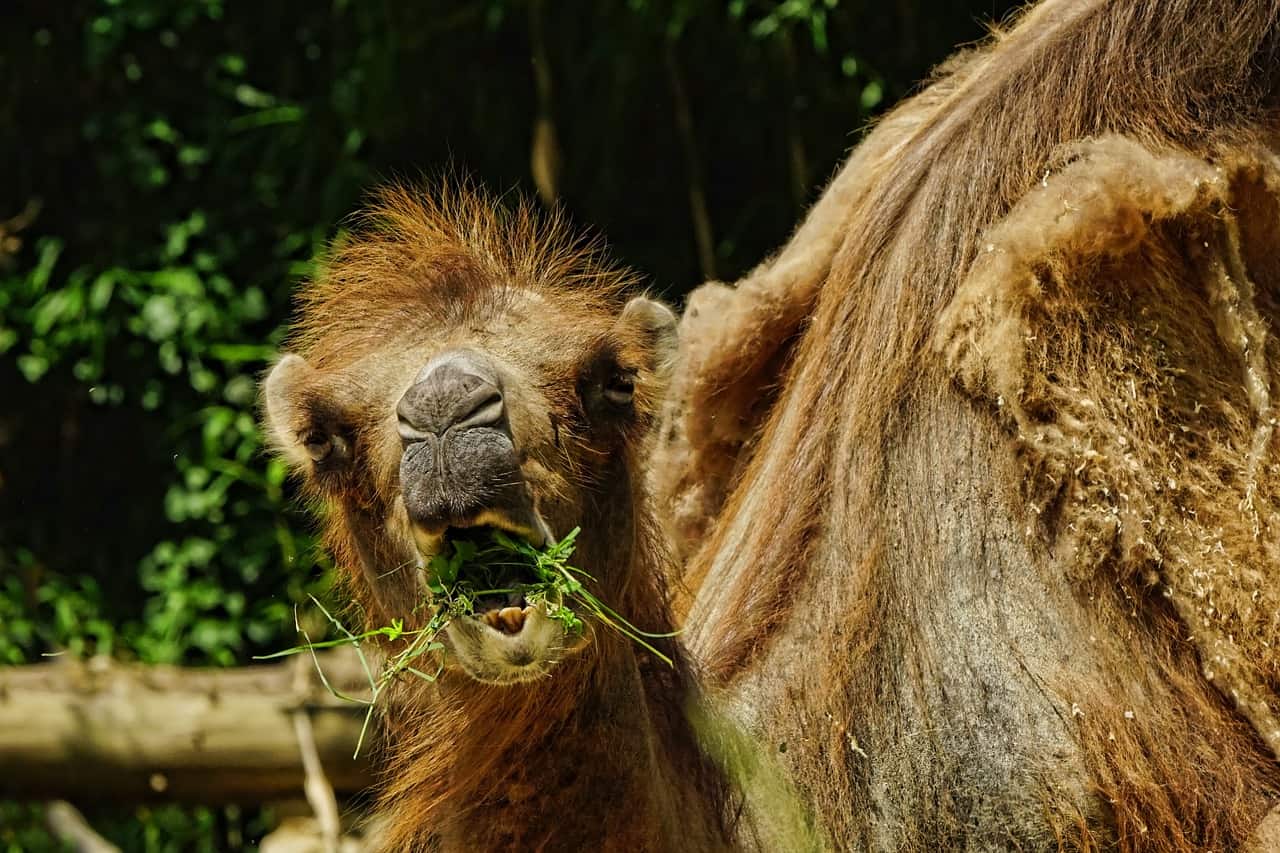
Camel diets consist mainly of grasses, leaves, and twigs which they get off of shrubs and trees. They consume almost every plant source that they come across in the desert, even ones that other mammals tend to avoid such as cacti.
Camels drink 30 gallons of water within 13 minutes.
That is equivalent to 113 liters of water. It is important for their species to fill up on water upon availability. Hence, one of their environmentally adaptable features is that their bodies rehydrate faster than other mammals’ could.
A camel can go without water for up to six or seven months.
This ability is exclusive during winters in the Sahara Desert. However, there are summer months when the temperature rises above 110°F or 37°C. During these times, camels can only last about five days with their poorly hydrated stamina.
The largest recorded meal in the world involved a roasted camel.
People witnessed its serving at an Arabic wedding feast.
Camel milkshakes are a delicacy in Abu Dhabi.
Made with camel milk, the delicious treat do not reach the Western world only because the government is not willing to pay for testing processes. Kazakhstan locals used camel milk to alleviate certain illnesses like tuberculosis.
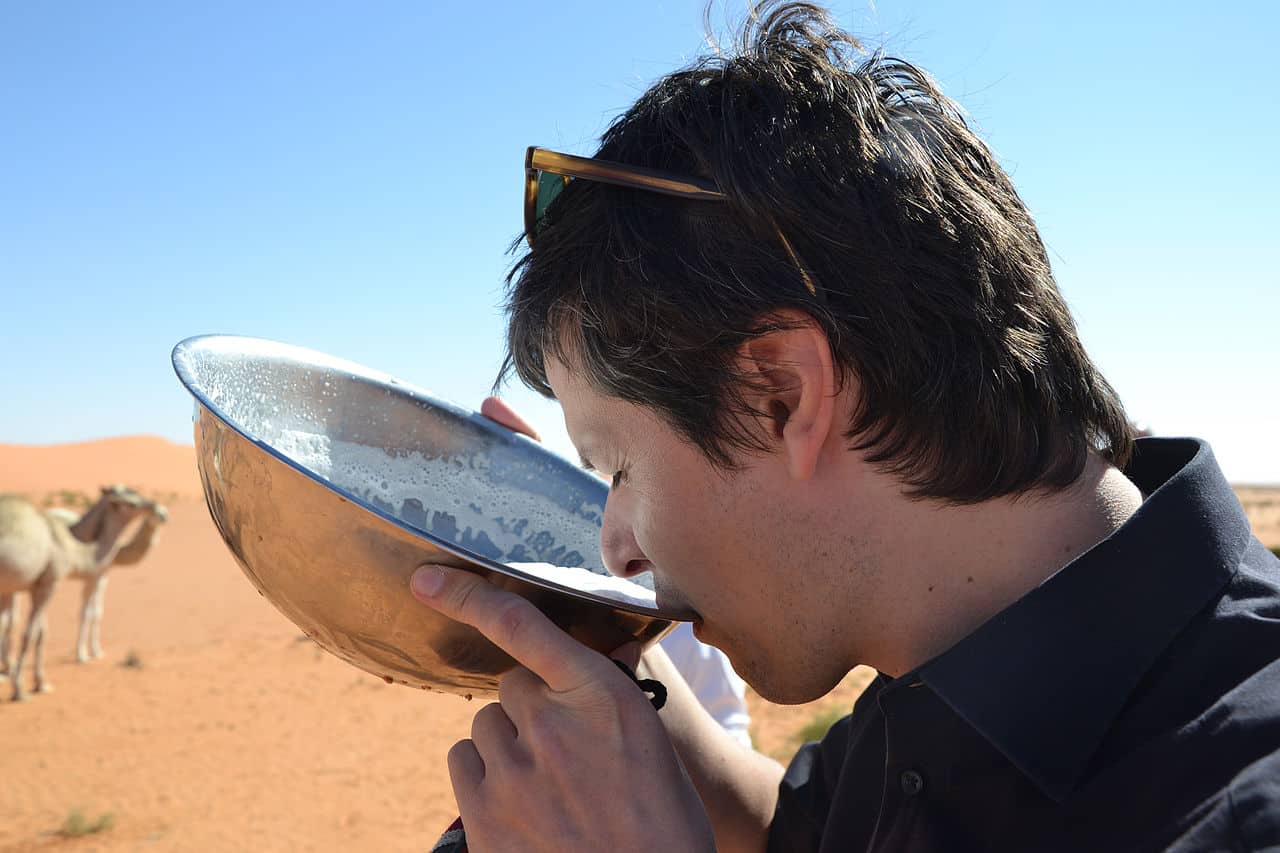
Camel milk is healthier than cow milk.
It is rich in iron, vitamins, and minerals, and even contains less fat content than that of cow milk.
Camels have a reputation for spitting green substance on people.
They even throw up unidentified contents from their stomach alongside their spit. Still, the humped creatures do not this for fun, but rather as a defense mechanism against possible threats.
As social creatures, camels like staying together into groups called ‘herds.’
A dominant male leads a herd, while the other males would form their individual herds which would then be called a ‘bachelor herd.’

The pregnancy of female camels lasts for 12-14 months depending on resources.
After that, a mother camel would find a private spot wherein she would have her young. They usually only give birth to one baby with a rare occurrence of twins being born.
Baby camels are called ‘calves.’
A newborn calf can stand to walk within 30 minutes of being born. However, a mother and her young would not rejoin the herd until after two weeks of delivery. Calves grow into full maturity when they reach age 7 and they live to about 17 years old.
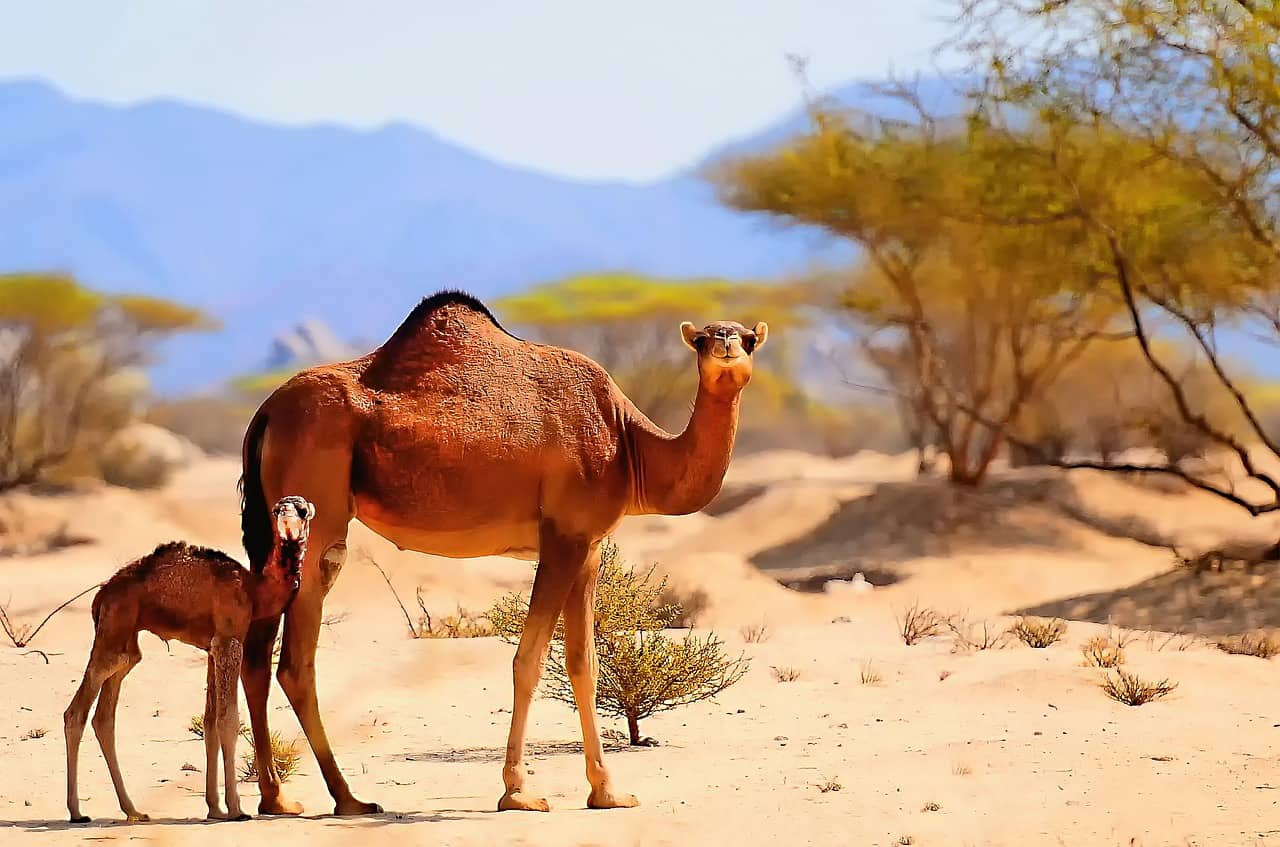
Upon birth, a camel does not have any humps yet.
It would only start growing humps when it is already old enough to eat solid foods.
In Kenya, the Camel Mobile Library provides people access to literature.
Camels help as transportation methods for taking books to remote areas. Otherwise, they would not have access to a library.
The legend of the Red Ghost is about a red camel.
In the stories, the animal takes the form of a terrifying creature that wanders an Arizona desert wherein it causes all kinds of wickednesses. It is believed to kill people and trample over tents.
Despite their calm timid appearance, camels were once useful fellows in past wars.
They were ridden on by Ancient Greeks, Persians, and Romans and was used for different purposes as well in the 20th century.

Camels were perceived as good luck in World War II.
Back then, Germans would drive their tanks over camel droppings which they believed would bring them good luck.
Every January, a camel wrestling event takes place in Turkey.
This activity traces its history back to the ancient world. Hence, animal rights groups cannot do much about it despite how unhappy they are about it.
The Arabic culture regards the camel highly.
In fact, they have 160 words that refer to camels alone.
Was this page helpful?
Our commitment to delivering trustworthy and engaging content is at the heart of what we do. Each fact on our site is contributed by real users like you, bringing a wealth of diverse insights and information. To ensure the highest standards of accuracy and reliability, our dedicated editors meticulously review each submission. This process guarantees that the facts we share are not only fascinating but also credible. Trust in our commitment to quality and authenticity as you explore and learn with us.
